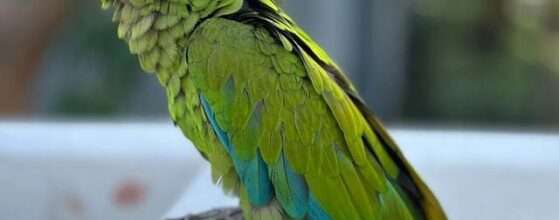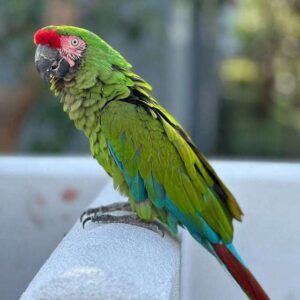
- by FPABS-Admin
- 0
- Posted on
Military macaw
Military macaw is a large yellow, red and blue Neotropical parrot native to humid evergreen forests of the Americas. Its range extends from southeastern Mexico to Peru, Ecuador, Colombia, Bolivia, Venezuela and Brazil in lowlands up to 1,000 m (3,300 ft), the Caribbean island of Trinidad, as well as the Pacific island of Coiba. Formerly, the northern extent of its range included southern Tamaulipas. In some areas, it has suffered local extinction because of habitat destruction, or capture for the parrot trade, but in other areas, it remains fairly common. It is the national bird of Honduras. Like its relative the blue-and-yellow macaw, the scarlet macaw is a popular bird in  as a result of its striking plumage. It is the third most common macaw species in captivity after the Blue and Gold and Greenwing Macaw respectively. In recent years it has become much rarer in captivity.Genetics
as a result of its striking plumage. It is the third most common macaw species in captivity after the Blue and Gold and Greenwing Macaw respectively. In recent years it has become much rarer in captivity.Genetics
In May 2013, it was announce that a team of scientists, led by Dr. Christopher M. Seabury and Dr. Ian Tizard of Texas A&M University had sequence the complete genome of the scarlet macaw. Base on this genome, species-specific microsatellite genetic markers were develop to aid genetic studies throughout the range of the species[7] These genetic markers were later validat on the trace amount of DNA acquire from feathers, and applied to study red and-green macaws in a tropical landscape where DNA can degrade very quickly.These markers were prove to be useful to study their population genetics and identification of individuals in the landscape of the Peruvian Amazon.
Description
It is about 81 centimeters (32 in) long, of which more than half is the point graduate tail typical of all macaws. Though the scarlet macaw has a larger percentage of tail than the other large macaws. The average weight is about 1 kilogram (2 lb 3 oz). The plumage is mostly scarlet, but the rump and tail-covert feathers are light blue. The greater upper wing coverts are yellow, the upper sides of the flight feathers of the wings are dark. Blue tail feather and the undersides of the wing and tail flight feathers are dark red with gold iridescence. Some individuals may have green in the wings.Behavior
A typical sighting is of a single bird or a pair flying above the forest canopy. Though in some areas flocks can be seen. They often gather at clay licks. Scarlet macaws communicate primarily through raucous honks; however. Vocal communication is highly variable and captive macaws known to be adept mimics of human speech.
